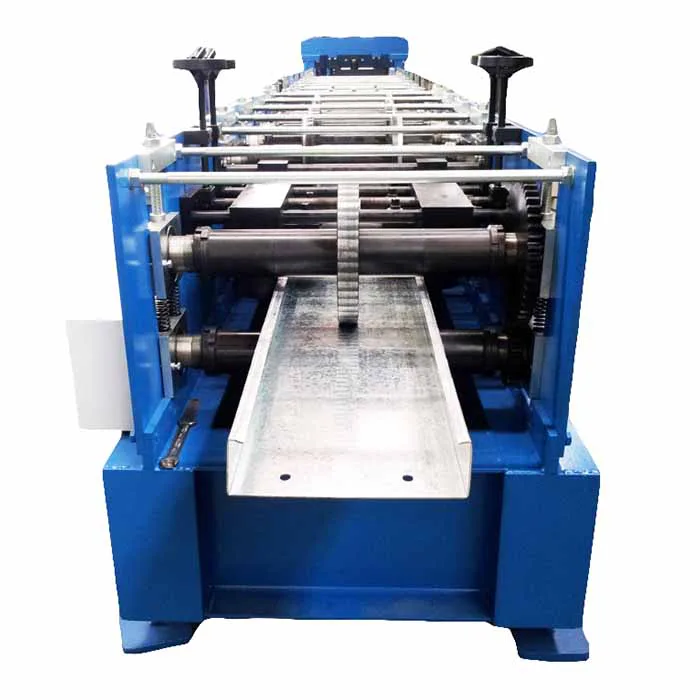
Comparing Manual vs. Automated Duct Fabrication Machines
- By:Metmac
- 2024-09-24
- 188
Manual duct fabrication involves skilled workers forming and assembling sheet metal into ductwork, while automated duct fabrication utilizes specialized machines to streamline the process. This article delves into the key differences between manual and automated duct fabrication, highlighting the advantages and disadvantages of each approach.
Efficiency and Productivity
Automated duct fabrication boasts significantly higher efficiency and productivity compared to manual methods. Advanced machines can cut, bend, and assemble ductwork with exceptional precision and at faster speeds. Automated systems can handle multiple tasks simultaneously, eliminating bottlenecks and reducing lead times. As a result, automated production facilities can meet high-volume orders and tight deadlines with ease.
Accuracy and Consistency
Automated duct fabrication machines ensure unmatched accuracy and consistency in the production process. Computer-controlled machines rely on advanced algorithms and precise measurements to create ductwork that meets exact specifications. The elimination of human error leads to superior quality control, minimizing defects and ensuring compliance with industry standards.
Versatility and Flexibility
Manual duct fabrication offers greater versatility and flexibility. Skilled workers can quickly adapt to design changes and produce customized ductwork for unique project requirements. Manual methods allow for easier integration of complex components, such as dampers, transitions, and plenums. However, this flexibility comes at the expense of productivity and consistency.
Labor Costs
Automated duct fabrication significantly reduces labor costs compared to manual methods. Machines require fewer operators, reducing payroll expenses and freeing up skilled workers for other tasks. The high initial investment in automated machinery can be offset by long-term savings in labor costs.
Space Requirements
Automated duct fabrication requires a larger footprint compared to manual workstations. Specialized machines occupy considerable floor space, and dedicated areas must be allocated for material storage and machine maintenance. Conversely, manual duct fabrication can be confined to smaller spaces, making it more suitable for cramped job sites or smaller-scale operations.
Maintenance and Upkeep
Automated duct fabrication machines require regular maintenance and upkeep to ensure optimal performance. These machines are complex and require skilled technicians for servicing. Preventive maintenance schedules and the availability of spare parts are crucial to minimize downtime and maintain productivity.
The choice between manual and automated duct fabrication depends on specific project requirements, production volume, and budget constraints. Manual methods offer flexibility and customization, while automated systems provide superior efficiency, accuracy, and labor cost savings. By carefully considering these factors, manufacturers can optimize their duct fabrication process, ensuring high-quality products, reduced lead times, and increased profitability.
-
Metal Sheet Forming Machine: The Engine of Modern Fabrication and the METMAC Standard
2025/12/30 -
Laser Cutting Machine for Steel Plate: Precision Redefined for Modern Fabrication
2025/12/30 -
Metal Curving Machine: Shaping Strength with Precision and the Art of METMAC Engineering
2025/12/30 -
Shear Metal Cutting Machine: Precision, Power, and the METMAC Standard
2025/12/30
-
Advanced Sheet Metal Rolling, Laser Cutting, and Folding Machines for Precision Fabrication
2025/10/31 -
High-Performance Sheet Metal Bending and Cutting Machines for Modern Fabrication
2025/10/31 -
High-Quality Sheet Metal Equipment for Sale: Efficient Solutions for Modern Manufacturing
2025/10/31 -
High-Performance Sheet Metal Equipment for Sale: Forming and Shearing Solutions for Modern Fabrication
2025/10/22
-
A Guide to the Latest Innovations in Sheet Metal Folding Machines
2024/11/29 -
Key Features to Consider When Investing in a Sheet Metal Folding Machine
2024/11/28 -
Enhancing Precision with Advanced Sheet Metal Folding Machines
2024/11/27 -
How to Choose the Right Sheet Metal Folding Machine for Your Workshop
2024/11/26







